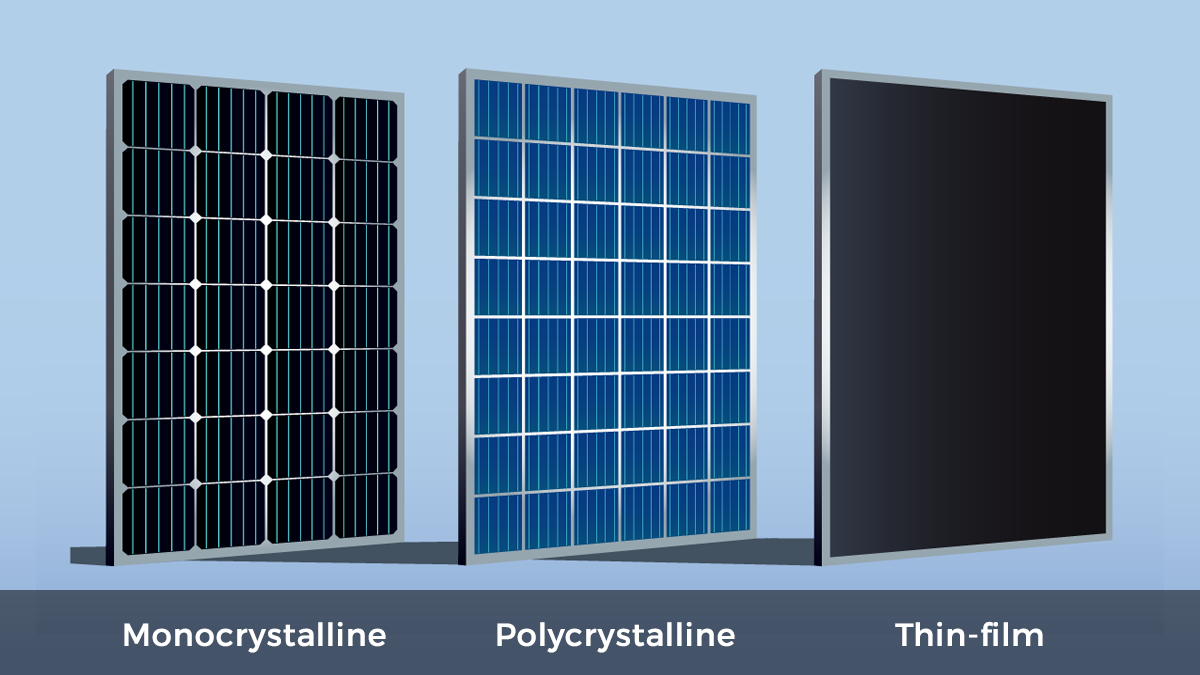
Types of Solar Panels: Find Your Perfect Match
Not all solar panels are created equal. There are three main types: monocrystalline, polycrystalline, and thin-film solar panels. Both monocrystalline and polycrystalline panels are rigid and durable. Thin-film solar panels are flexible and lighter in weight.
Monocrystalline
These are the sleek, black ones you might have seen. They’re made from a single, continuous crystal structure and are known for being highly efficient, even in low-light conditions.
Pros: they have the best performance.
Cons: higher cost.
Polycrystalline
A bit bluer in color, with a speckled look, these are made from multiple crystal fragments. Like monocrystalline panels, they are rigid and suitable for rooftop applications.
Pros: they are more affordable.
Cons: slightly less efficient than monocrystalline panels.
Thin-Film Panels
Because they are flexible and lightweight, they can be used in a variety of applications where heavier and rigid solar panels are not a good solution. Even with their lower efficiency, thin-film solar usually has the fastest payback time, as compared to other types of solar panels.
Pros: they’re economical, generating less waste during manufacture and at “end of life”.
Cons: shorter lifespan and lower efficiency than monocrystalline panels.
Learn more about how you can benefit from solar power:
Find out about VerdeWatts Power Purchase Agreement and how it can help you make the shift to solar power without a large upfront cost.
Learn about community solar energy from U.S. Department of Energy Solar Energy Technologies Office (SETO).


